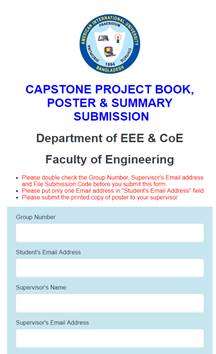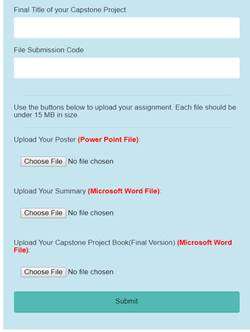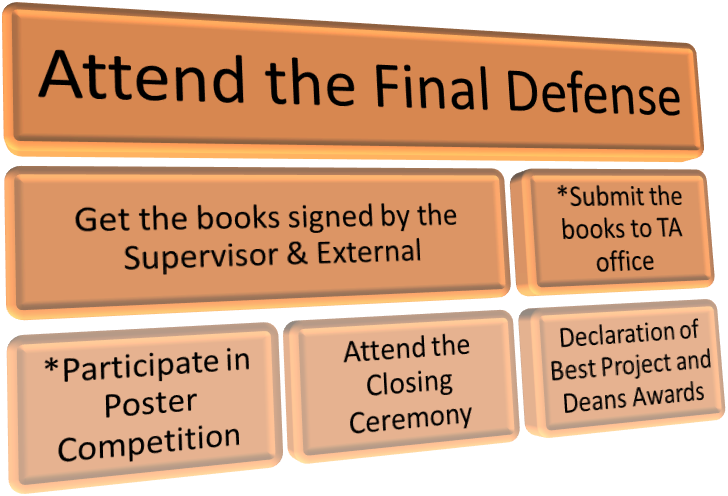Capstone Project Steps:
Students who enrolled for Capstone Project need to complete seven steps to meet all the requirements.

Figure: 1
Step 1: Proposal Submission
Students who completed 100 credits can apply for Capstone Project online following the application notice for each semester.
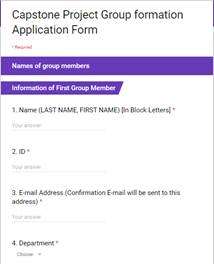

Figure 2
After the application, the form attached to the confirmation email must be signed and submitted to Capstone Committee.
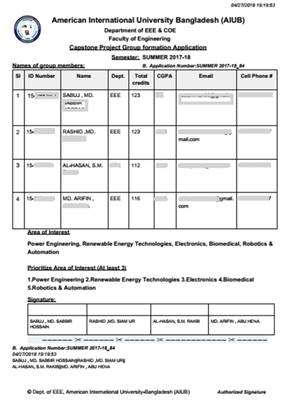
Figure 3
After submitting the form, the groups will be allocated to specialized supervisors according to the research interest.
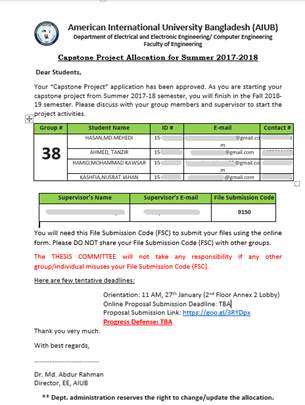
Figure 4
Step 2: Proposal Submission
After two weeks of group formation (Final groups with Supervisors are posted), the groups are required to submit a proposal form (approved by the supervisor) with the proposed Project Title online at https://rebrand.ly/Capstone_Proposal.
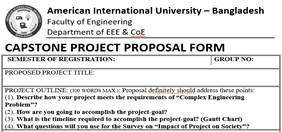
Figure 5
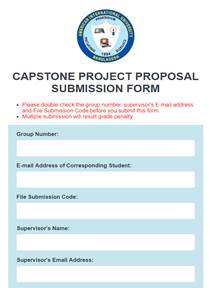
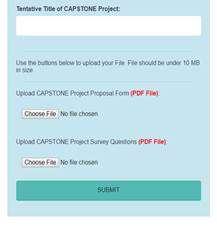
Figure 6
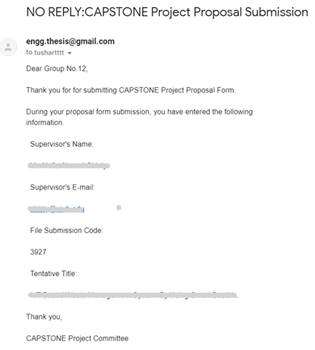
Figure 7
Step 3: Chapter 1 & 2 and Progress Report Submission
Supervisors must comment and approve the form. Students should also submit a progress report to External at the time of their Progress Defense. Students must submit Chapters 1 & 2 and Progress Report ONLINE (at https://rebrand.ly/Capstone_Progress) before the deadline.
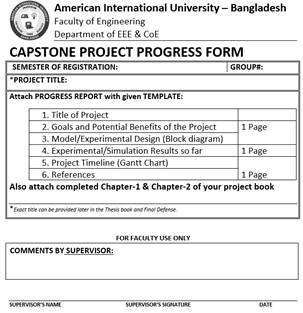
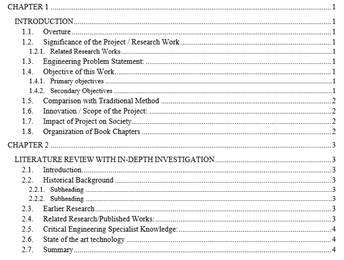
Figure 8
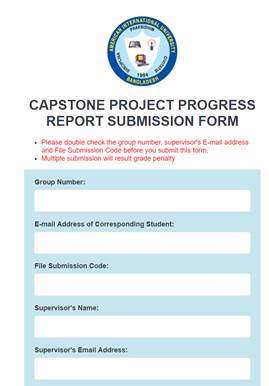
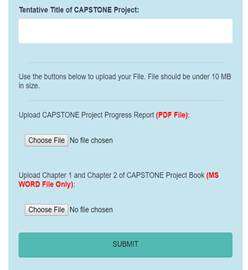
Figure 9
Step 4: Progress Defense
Students must

Figure 10
Students progress will be evaluated by the External through their presentations and matched with submitted progress reports.
Through their defense/report, the External will assess the student timeline and status for their completion date.
The Supervisor and External will recommend groups to proceed or deffer, depending on the presentation.
After Successful progress defense, students must complete the registration process and complete payments.
Step 5: Book Submission to Supervisor & External
Students need to complete the draft book and submit it to the supervisor. After approval of the supervisor, the draft book needs to be forwarded to the External for review. Then the final version of the book needed to be checked for Plagiarism (by the supervisor). Then submit the book and similarity report online along with a poster and summary.
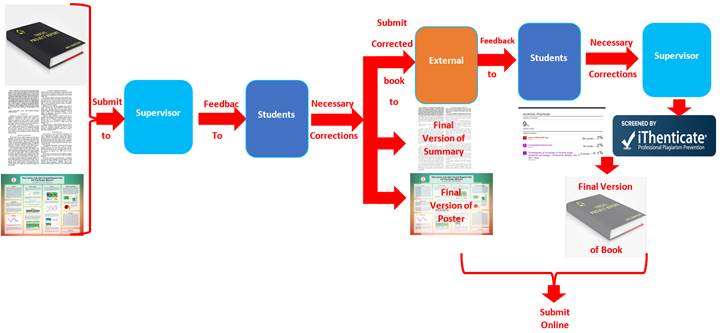
Figure 11
Step 6: Final Version of Book, Poster, and Summary Submission with plagiarism report
Students must submit Final Version of Book, Poster, and Summary Submission with plagiarism report online at https://rebrand.ly/final_defense before the deadline.
Final Version of Book, Poster, and Summary must comply with EEE department approved Tepmlates.
Student will also submit the printed copy of the poster to their supervisor.
Poster submission MUST have supervisors signature.
To go green, please print the books on double sided page starting from chapter 1. The initial pages before chapter 1 must be single sided.
Every book will go through plagiarism check by iThenticate. Accepted similarity score is below 25%. Hence, we need quality writing.
Minimum number of pages for chapter 1 to 7 should be 55. You may put trivial information as appendix.
Each group must print minimum 4/5 copies of each book (3/4 for students, 1 for library). If extra copies are needed the thesis committee will inform the individual group. If supervisor wants s/he may also request for 1 copy.
Figure 12
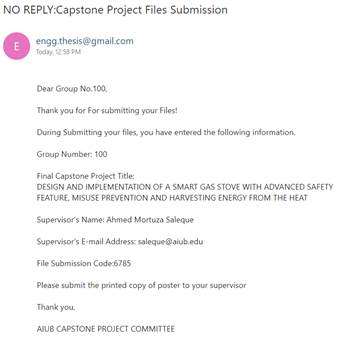
Figure 13
Step 7: Final Defense
Figure 14
OBE Mapping
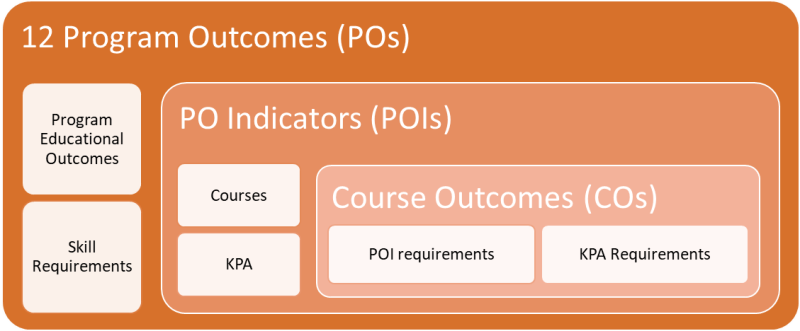
Figure 15
Capstone Project Course Outcomes (COs)
|
|
|
PO Assessed |
Documentation |
Assessed By |
|
CO1 |
Research literature and analyze the validity and accuracy of existing solution for complex engineering problems involving wide-ranging or conflicting technical, engineering issues and diverse groups of stakeholders with widely varying needs. |
P.b.4.C5 (K4, P1, P2, P6) |
Progress Report and Chapter 1 & 2 |
Supervisor And External |

Figure 16
|
|
|
PO Assessed |
Documentation |
Assessed By |
|
CO2 |
Communicate effectively by giving and responding to clear instructions to produce novel engineering solutions which extends beyond previous experiences by applying principles-based approaches involving the use of diverse resources. |
P.j.1.A2 (A1, A3, A5) |
Progress Defense Presentation |
Supervisor |
Figure 17
|
|
|
PO Assessed |
Documentation |
Assessed By |
|
CO3 |
Develop process considering cultural and societal factors and provide in-depth analysis for complex engineering problems including many component parts or sub-problems. |
P.c.2.C4 (K5, P1, P3, P7) |
Chapter 1 and Progress Report |
Supervisor And External |

Figure 18
|
|
|
PO Assessed |
Documentation |
Assessed By |
|
CO4 |
Analyze the impact of the proposed professional engineering solutions to society and culture. |
P.g.2.C5 (K7) |
Overall Thesis Book |
Supervisor |
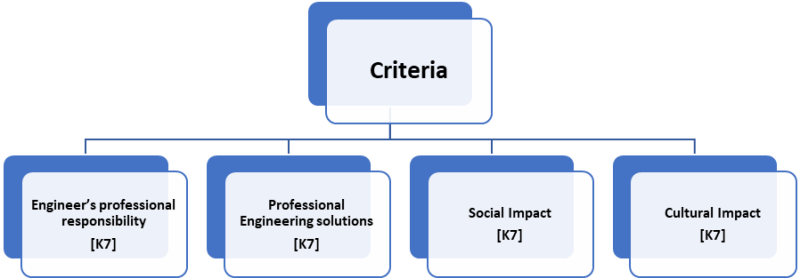
Figure 18
|
|
|
PO Assessed |
Documentation |
Assessed By |
|
CO5 |
Follows professional codes of ethics and standards considering public safety; the impacts of project on economy, environment and sustainability. |
P.h.1.C3 (K7) |
Overall Thesis Book |
Supervisor |

Figure 19
|
|
|
PO Assessed |
Documentation |
Assessed By |
|
CO6 |
Demonstrates individual responsibilities based on norms of engineering practice. |
P.h.2.A4 |
Overall Thesis Book |
Supervisor |
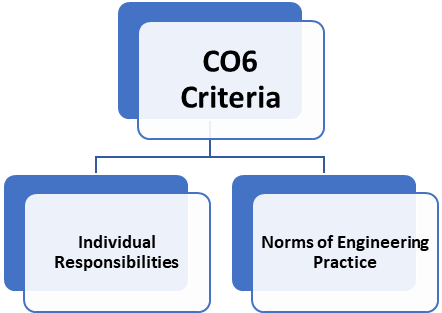
Figure 20
|
|
|
PO Assessed |
Documentation |
Assessed By |
|
CO7 |
Produce written engineering reports by applying principle-based approaches and design documentation on complex engineering activities for different stakeholders. |
P.j.2.P3 (A1, A4) |
Overall Thesis Book |
Supervisor |

Figure 21
|
|
|
PO Assessed |
Documentation |
Assessed By |
|
CO8 |
Make and deliver effective presentation based on complex engineering activities. |
P.j.3.A2 (A1, A2) |
Final Presentation |
Supervisor and External |
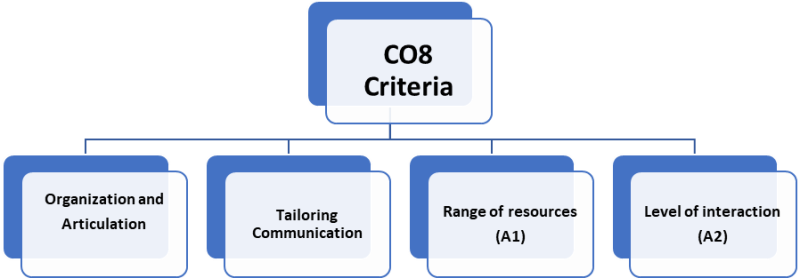
Figure 22
|
|
|
PO Assessed |
Documentation |
Assessed By |
|
CO9 |
Apply engineering management principles and economic decision making to solve engineering projects as a team. |
P.k.1.P4 |
Chapter 3 |
Supervisor |
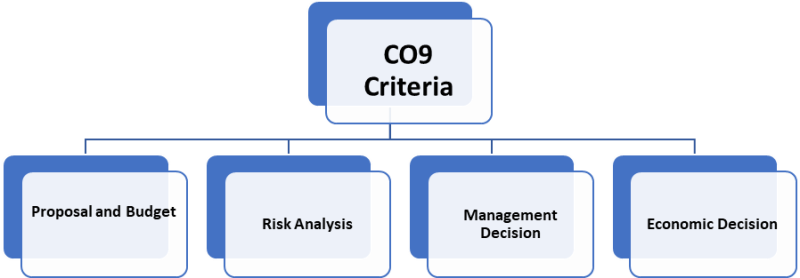
Figure 23
|
|
|
PO Assessed |
Documentation |
Assessed By |
|
CO10 |
Manage multi-disciplinary projects as a member/leader. |
P.k.2.P4 |
Chapter 3 |
Supervisor |
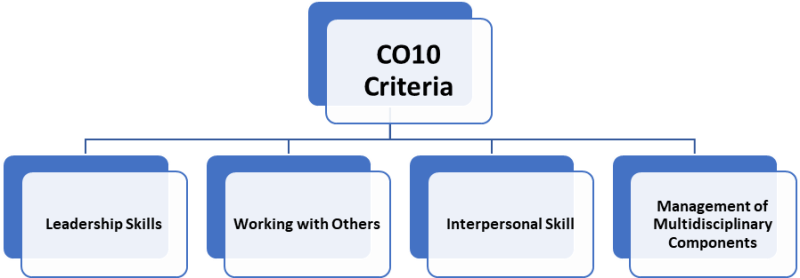
Figure 24
|
|
|
PO Assessed |
Documentation |
Assessed By |
|
CO11 |
Demonstrate competency in completing individual engineering project based on relevant management principles and economic models. |
P.k.3.A5 |
Chapter 3 |
Supervisor |
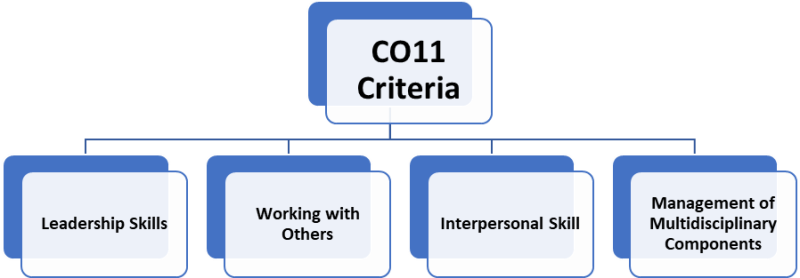
Figure 25
|
|
|
PO Assessed |
Documentation |
Assessed By |
|
CO12 |
Investigate and gather information on a given engineering issue. |
P.l.1.A1 |
Mandatory Report on Seminar |
Mandatory Online Survey Filled By Students |
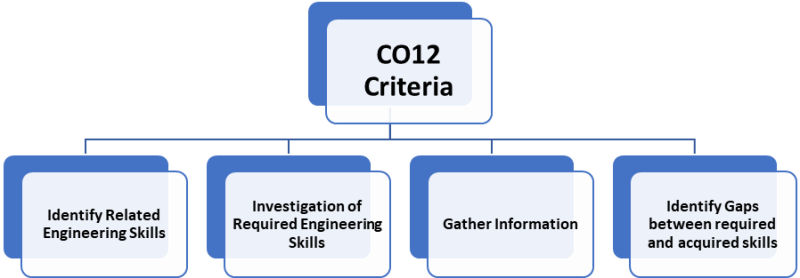
Figure 26
|
|
|
PO Assessed |
Documentation |
Assessed By |
|
CO13 |
Seek and use resources in solving engineering problems. |
P.12.2.A5 |
Mandatory Report on Seminar |
Mandatory Online Survey Filled By Students |
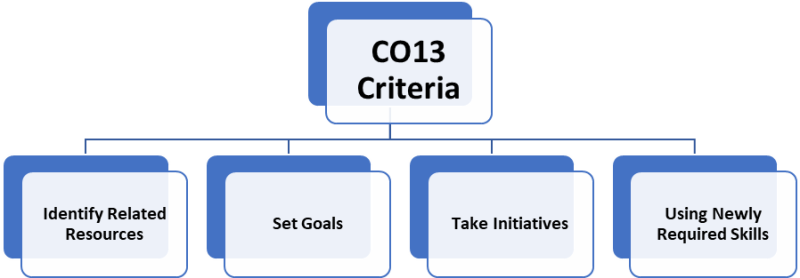
Figure 27
|
|
|
PO Assessed |
Documentation |
Assessed By |
|
CO14 |
Recognizing the need for continuing education and participation in professional societies and meetings. |
P.12.3.A5 |
Mandatory Report on Seminar |
Mandatory Online Survey Filled By Students |
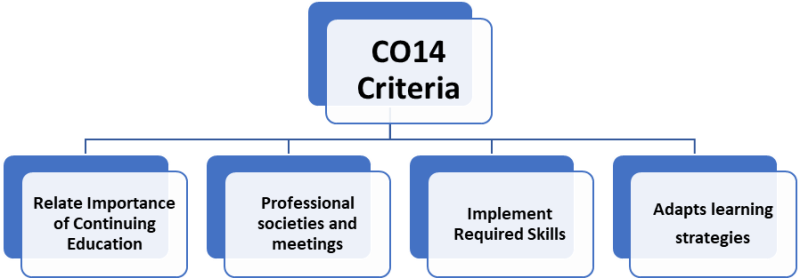
Figure 28
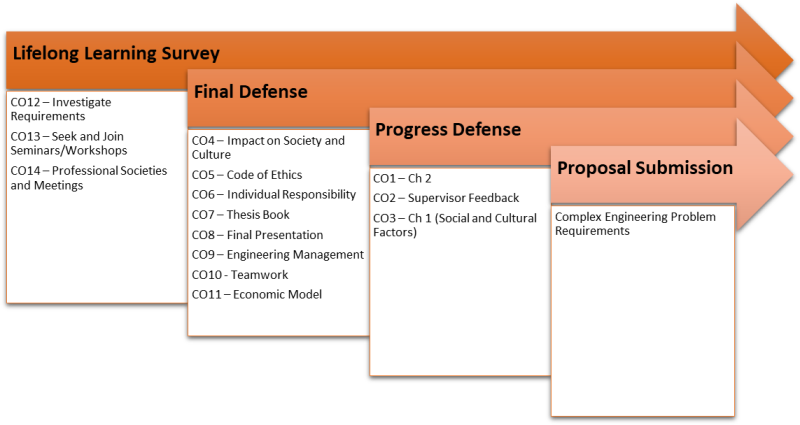
Figure 29
Complex Engineering Problem Solving (P)
Complex Engineering Problems have characteristic P1 and some or all of P2 to P7.
Indicator |
Title |
Description |
P1 |
Depth of knowledge required |
Cannot be resolved without in-depth engineering knowledge at the level of one or more of K3, K4, K5, K6 or K8 which allows a fundamentals-based, first principles analytical approach |
P2 |
Range of conflicting requirements |
Involve wide-ranging or conflicting technical, engineering and other issues |
P3 |
Depth of analysis required |
Have no obvious solution and require abstract thinking, originality in analysis to formulate suitable models |
P4 |
Familiarity of issues |
Involve infrequently encountered issues |
P5 |
Extent of applicable codes |
Are outside problems encompassed by standards and codes of practice for professional engineering |
P6 |
Extent of stakeholder involvement and conflicting requirements |
Involve diverse groups of stakeholders with widely varying needs |
P7 |
Interdependence |
Are high level problems including many component parts or sub-problems |

